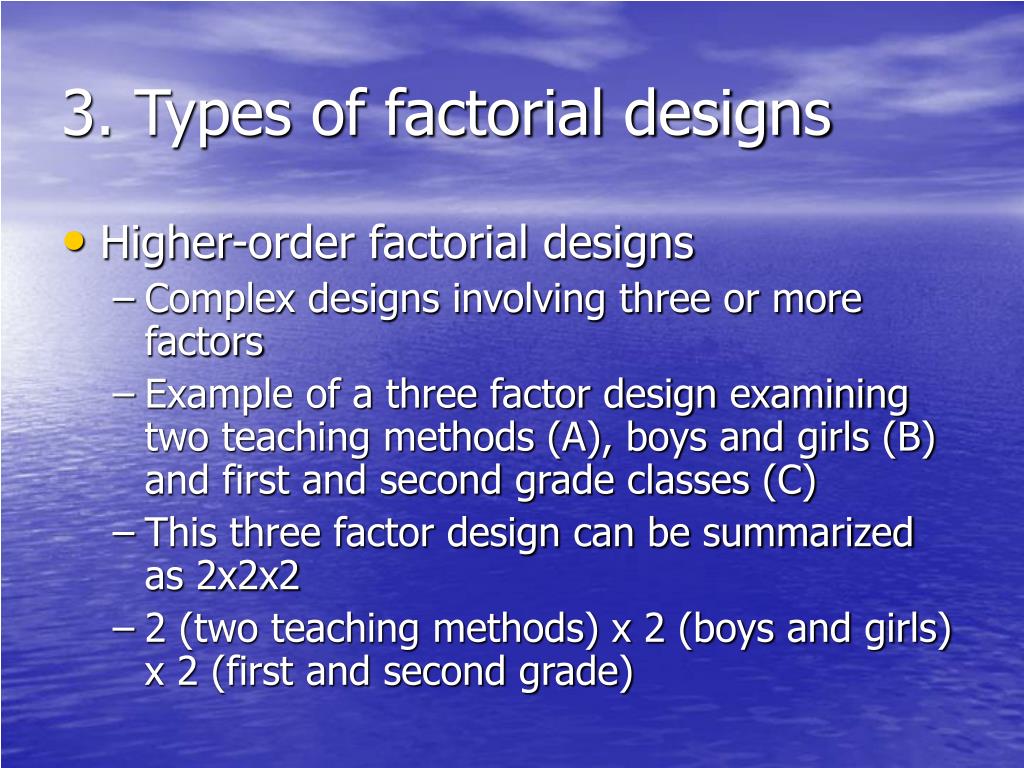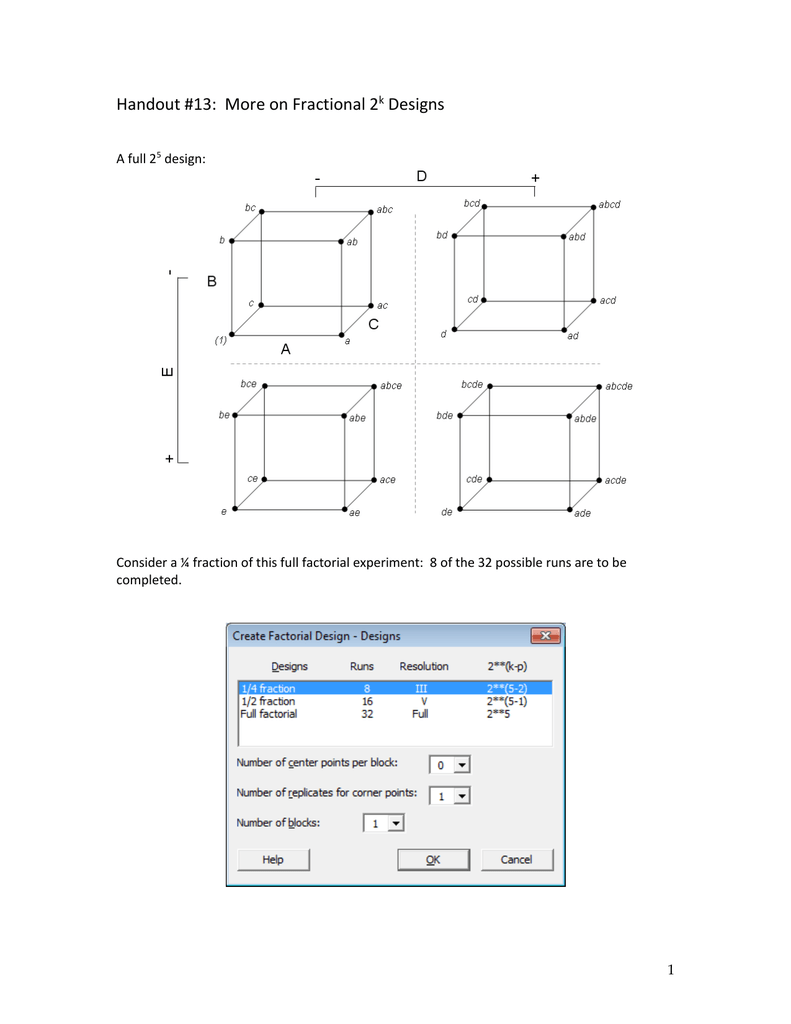Table Of Content

The traditional rules of the scientific method are still in force, so statistics require that every experiment be conducted in triplicate. Imagine an aquaculture research group attempting to test the effects of food additives upon the growth rate of trout. As expected, we the average height is 6 inches taller when the subjects wear a hat vs. do not wear a hat. So, the main effect of wearing hats is to add 1 inch to a person’s height. As expected, we see that the average height is 1 inch taller when subjects wear shoes vs. do not wear shoes.
Assigning Participants to Conditions
Statology Study is the ultimate online statistics study guide that helps you study and practice all of the core concepts taught in any elementary statistics course and makes your life so much easier as a student. In the previous plot, the two lines were roughly parallel so there is likely no interaction effect between watering frequency and sunlight exposure. For example, suppose a botanist wants to understand the effects of sunlight (low vs. high) and watering frequency (daily vs. weekly) on the growth of a certain species of plant. Explore Psychology provides information about psychology and mental health.

2.3. Assigning Participants to Conditions¶
In many factorial designs, one of the independent variables is a non-manipulated independent variable. The other was private body consciousness, a participant variable which the researchers simply measured. Another example is a study by Halle Brown and colleagues in which participants were exposed to several words that they were later asked to recall (Brown, Kosslyn, Delamater, Fama, & Barsky, 1999)[1].
Non-Manipulated Independent Variables
After all, only a small portion of a sample in a factorial experiment will get a particular set of components (e.g., in the design depicted in Table 1 only 1/32 of the N will get a particular combination of components). Just as including multiple dependent variables in the same experiment allows one to answer more research questions, so too does including multiple independent variables in the same experiment. For example, instead of conducting one study on the effect of disgust on moral judgment and another on the effect of private body consciousness on moral judgment, Schnall and colleagues were able to conduct one study that addressed both variables.
All participants could be tested both while using a cell phone and while not using a cell phone and both during the day and during the night. This would mean that each participant would need to be tested in all four conditions. The advantages and disadvantages of these two approaches are the same as those discussed in Chapter 5.

1.2. Measures of Different Constructs¶
Which one of those three might be deemed most promising might be addressed via other criteria (effects on abstinence, costs, and so on) and in a follow-up RCT. Including additional factors in an experiment might certainly affect the significance tests of a given factor. The reduction in power will be greater if we control experiment-wise error, due to the larger number of main and interaction effects.
4. Complex Correlational Designs¶
"No aphorism is more frequently repeated in connection with field trials, than that we must ask Nature few questions, or, ideally, one question, at a time. The writer is convinced that this view is wholly mistaken." Half Normal Plots for wt% methanol in biodiesel and number of theoretical stages are shown below. Other options can be selected from the "Analyze Factorial Design" menu such as "Covariates...", "Prediction...", "Storage...", and "Weights...". Once all desired changes have been made, click "OK" to perform the analysis.
For example, a group allocated in the non‐intervention group may not feel better as they are not getting the treatment, or an investigator may pay more attention to the group receiving treatment, and thereby potentially affecting the final results. However, certain treatments cannot be blinded such as surgeries or if the treatment group requires an assessment of the effect of intervention such as quitting smoking. A design which manipulates one independent variable between subjects and another within subjects.
3.8. Example bar graphs¶
You may find that the patterns of main effects and interaction looks different depending on the visual format of the graph. The exact same patterns of data plotted up in bar graph format, are plotted as line graphs for your viewing pleasure. Note that for the IV1 graph, the red line does not appear because it is hidden behind the green line (the points for both numbers are identical). The effect of one independent variable can depend on the level of the other in several different ways. Information bias is when a systematic error is committed while obtaining data from the study subjects. This can be in the form of recall bias when subject is required to remember certain events from the past.
In such large-scale studies, it is difficult and impractical to isolate and test each variable individually. The primary way of doing this is through the statistical control of potential third variables. Instead of controlling these variables by random assignment or by holding them constant as in an experiment, the researcher measures them and includes them in the statistical analysis. Consider some research by Paul Piff and his colleagues, who hypothesized that being lower in socioeconomic status (SES) causes people to be more generous [PKCote+10]. They measured their participants’ SES and had them play the “dictator game.” They told participants that each would be paired with another participant in a different room.
We have discussed how the manipulation of multiple treatment factors might create unintended effects due to overall burden, inducement of optimism, apparent incompatibility of components or delivery routes, differential staff delivery, and so on. Investigators should consider using measures that would be sensitive to such effects. For instance, investigators might assess measures of burden (treatment fatigue) and determine if these are especially highly related to particular ICs or to an increasing number of ICs.
Optimization and modeling of synthesis parameters of neodymium(III) bromide by dry method using full factorial design ... - ScienceDirect.com
Optimization and modeling of synthesis parameters of neodymium(III) bromide by dry method using full factorial design ....
Posted: Wed, 20 Dec 2017 18:38:04 GMT [source]
If these values represent "low" and "high" settings of a treatment, then it is natural to have 1 represent "high", whether using 0 and 1 or −1 and 1. Nature, he suggests, will best respond to "a logical and carefully thought out questionnaire". A factorial design allows the effect of several factors and even interactions between them to be determined with the same number of trials as are necessary to determine any one of the effects by itself with the same degree of accuracy. In addition, SuperGym offers 4 different workout plans, A through D, none of which are directly catered to any of the different types. Create an experimental factorial design that could be used to test the effects of the different workout plans on the different types of people at the gym. Because experiments from the POD are time consuming, a half fraction design of 8 trial was used.
Please also list any non-financial associations or interests (personal, professional, political, institutional, religious or other) that a reasonable reader would want to know about in relation to the submitted work. To save this article to your Google Drive account, please select one or more formats and confirm that you agree to abide by our usage policies. If this is the first time you used this feature, you will be asked to authorise Cambridge Core to connect with your Google Drive account.Find out more about saving content to Google Drive.
For instance, investigators might choose to reduce the burden of an IC by cutting sessions or contact times. This might reduce the meaning of the factor because it might make the IC unnecessarily ineffective or unrepresentative. The columns for AB, AC and BC represent the corresponding two-factor interactions. The columns for A, B and C represent the corresponding main effects, as the entries in each column depend only on the level of the corresponding factor.

No comments:
Post a Comment